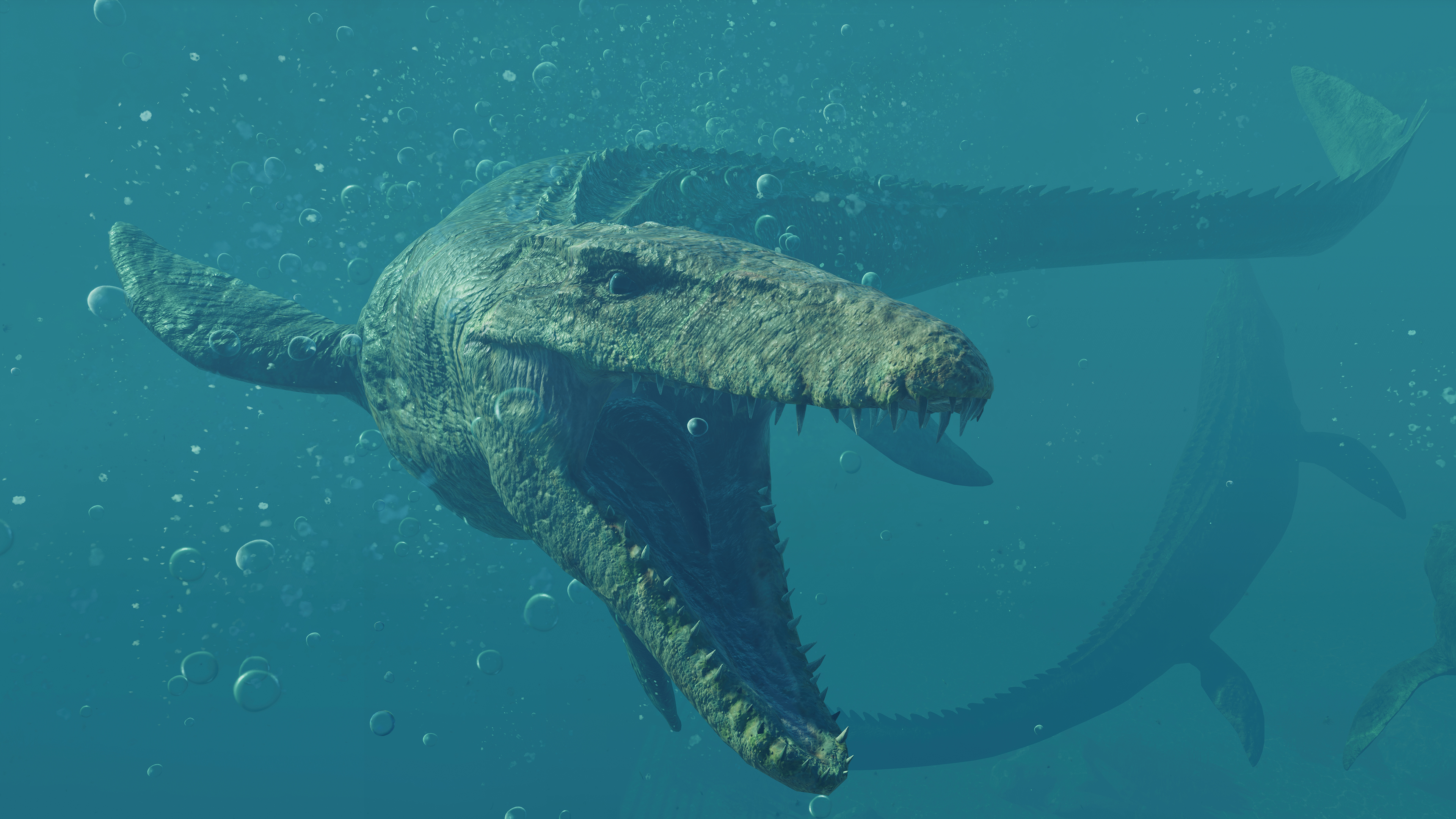Amazing fossils from the day of the Dinosaur-ending asteroid strike may have been found
A completely intact dino-drumstick complete with skin and more. Just need 11 ancient herbs and spices.

The Tanis fossil site located in North Dakota in the United States of America is currently one of the most interesting places on Earth. Well that's if you like dinosaurs and uncovering the ancient mysteries of our planet. Maybe you're more into ancient computers that predict eclipses. If not, uh, why not check out some of our hot Elden Ring content? We've got guides on the best builds, how to survive, and all sorts of stuff.
Ok, now that we've gotten rid of those people, back to the dinosaurs.
According to the BBC, the site in Tanis has uncovered some of the most amazing dinosaur discoveries humans have ever made. Amazingly preserved fossils have been found there, like a pterosaur embryo preserved inside its egg. Scans on the egg revealed it was likely leathery, and may have been buried in sand like a turtle's eggs, which is super interesting for a flying creature.
Despite this amazing find, that's not necessarily the best the Tanis fossil site has to offer. Evidence is surfacing that some of the remains found at this site may actually be from the exact time the infamous Chicxulub asteroid wiped out dinosaur life. That's an incredible look into one of the most devastating events this planet has ever seen, other than humans, of course.
Generally speaking, it's currently agreed that a collision with a space rock undid all the hard evolutionary work of many dinosaurs, causing a massive extinction. Evidence tells us that impact happened in the Gulf of Mexico, which is 3,000km from the Tannis site. The sheer power of this collision has scattered notes of the catastrophic event far and wide.

Best AIO cooler for CPUs: All-in-one, and one for all... components.
Best CPU air coolers: CPU fans that don't go brrr.
Because of this, all sorts of fossils can be found at the Tanis site. Archaeologists have found aquatic and land fairing species all dumped in the same place, but this offers up some even more interesting discoveries.
Some of the aquatic creatures found at the site had tiny pieces of molten rock stuck in their gills. These pieces have been linked to the asteroid impact location both by chemical and radiometric dating analysis. It's believed that these fish have pieces of the impact stuck in their ancient bodies, and that's a pretty big clue in finding out more about this cataclysmic footnote on dino-history.
The biggest gaming news, reviews and hardware deals
Keep up to date with the most important stories and the best deals, as picked by the PC Gamer team.
But that's still not all archaeologists are finding at this incredible site. A whole Thescelosaurus leg, complete with preserved skin was uncovered. Thescelosaurus were a relatively small dino that ran on two legs and had a long tail. They're a bit similar to the more commonly known Dryosaurus. Think the little friendlier dudes from things like Jurassic Park and you're on the right track.
The preserved skin is a really cool piece of insight because it's brand new information for the species. It shows that this dino likely did have scaly lizard skin like what we traditionally envision dinosaurs to have. That means this little herbivore was not likely to be feathered, like some of its fiercer carnivorous cousins.
But this ancient dino-drumstick isn't done delivering shocking news quite yet. This leg is a cleanly removed piece of Thescelosaurus which is speculated to have been blown clean off. There's no bite marks, signs of illness or specific injury, just a nice hunk of leg. Due to the location, and other discoveries being found, the current speculation is that this leg was literally blown off by the very space rock that ended it all. More peer reviewed testing is required, but it's still fascinating to think about. Turns out, they should just make the whole dino out of the leg bit.
What makes all this especially interesting is that dinosaur remains from this time period are especially rare to come by. Fossils even in thousands of years leading up to the impact just aren't commonly found, likely in part due to the devastating effects of an extinction event like this one.
The good news is there's more digging, science, and peer reviewed studies to be done so hopefully we'll get to hear even more cool news from the land before time soon. A special show narrated by Sir David Attenborough on the site at Tanis will air on the BBC on April 15, which is likely well worth checking out if you want to find out more, or just listen to one of the coolest people on the planet talk dinosaurs.

Hope’s been writing about games for about a decade, starting out way back when on the Australian Nintendo fan site Vooks.net. Since then, she’s talked far too much about games and tech for publications such as Techlife, Byteside, IGN, and GameSpot. Of course there’s also here at PC Gamer, where she gets to indulge her inner hardware nerd with news and reviews. You can usually find Hope fawning over some art, tech, or likely a wonderful combination of them both and where relevant she’ll share them with you here. When she’s not writing about the amazing creations of others, she’s working on what she hopes will one day be her own. You can find her fictional chill out ambient far future sci-fi radio show/album/listening experience podcast right here. No, she’s not kidding.

